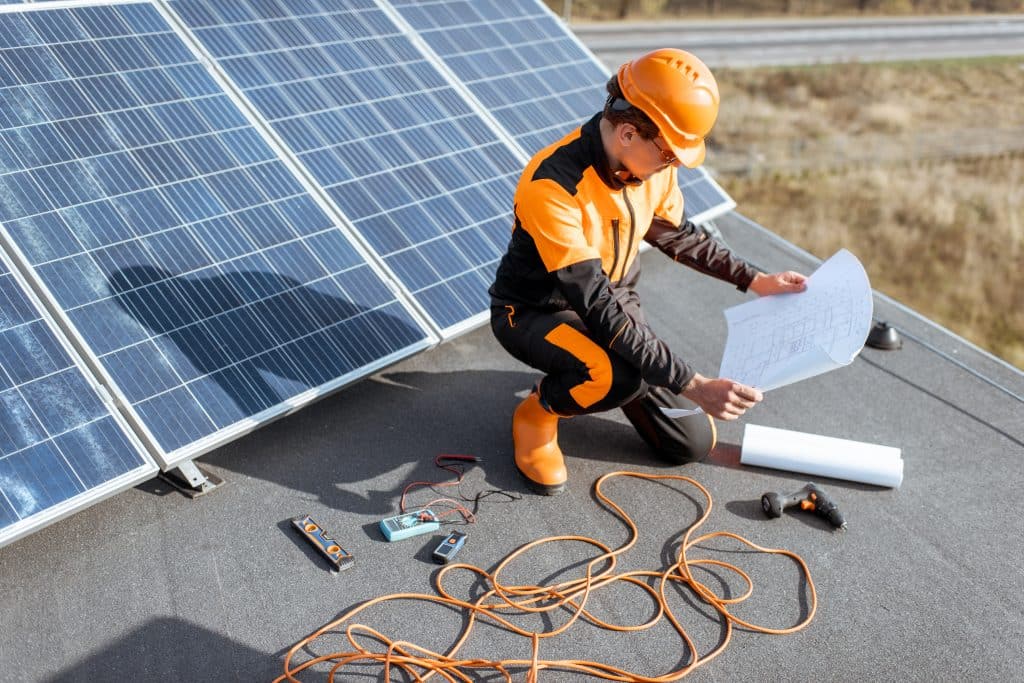Solar panels are becoming more and more popular each year. More and more people are switching to solar energy for a good reason! Solar panels can help you save money on your electricity bill and are a great way to reduce your carbon footprint. In this guide, we will discuss installing solar panels on your house. We will cover everything from sizing the system to choosing the right installer. So if you’re interested in going solar, keep reading!
Contents
Why Go Solar?

Solar power is one of the most popular forms of renewable energy, and it’s not hard to see why. Solar panels are a clean and efficient way to generate electricity, and you can use them in both residential and commercial settings. In addition, solar panels have several advantages over other forms of energy generation, such as wind or hydropower.
First, they are far less intrusive than large wind turbines or dams. Second, they can be installed on rooftops or in open spaces, which means they have a minimal environmental impact. Third, solar panels are becoming increasingly more efficient as technology improves.
Finally, solar power is a very stable form of energy, so it can be relied upon even when the sun isn’t shining. All of these factors make solar power an attractive option for those looking to reduce their carbon footprint or move to a more sustainable form of energy generation.
Guide To Putting Solar Panels On Your House
Unless you’re a well-versed electrition, we recommend getting a professional to help install your solar panels.
That being said, here are the basics that you should know about installing solar panels on your house:
Complete A Site Survey

Before you decide to put solar panels on your home, it is important to do a complete site survey. This will ensure that your home can fully utilize the sun’s energy. The first step is to determine the number of hours of sunlight that your home receives each day. This information can be found online or at your local weather station. Next, you will need to calculate the square footage of your roof. This will give you an idea of how many panels you will need to install.
Finally, you will need to consider your home’s orientation. South-facing roofs are ideal for solar panel installation, but east- and west-facing roofs can also work well. With a little planning, you can ensure that your home can take advantage of all the sun offers.
Secure Permits

One of the most important steps in installing solar panels is securing the proper permits. Depending on your location, you may need to obtain a building, electrical, and/or mechanical permit. The building permit is usually the most expensive and time-consuming, so starting the process as soon as possible is essential. The electrical and mechanical permits are generally cheaper, and you can obtain them more quickly.
Your solar installer should be able to help you navigate the permitting process and secure the necessary permits. Once you have your permits, you can move forward with installing your solar panels.
Oder Equipment

The next step is ordering all the equipment needed for your solar panel installation. This includes the panels themselves, as well as the mounts, wires, and other hardware. Several different types of solar panels are available on the market, so it’s important to do your research before making a purchase. You will also need to decide on the type of mount that you want to use. The most common type is the roof mount, but the ground and pole mounts are also available.
Once you have all of your equipment, you can move on to the next step: installing your solar panels.
Install The Panels

The long-awaited day has come–your solar installer will arrive to begin transforming your home. First, they’ll make sure that all tiles or shingles are properly in place on the roof. Then, they’ll lay down the wiring necessary to connect your residential solar system to the grid.
Afterward, construction of the racking begins. This is what holds the solar panels up and in position. They will place the panels into said racks before being connected to an inverter (or several microinverters).
If you have a battery bank, your installer will also bring that up. The time it takes to install solar panels is one of the most frequently asked questions. It all depends on the size of your property and the scope of the solar panel installation, but you can expect a timeline from one to three days in total. This stage should be quite simple if your solar system is properly designed and planned out.
Approval and Connectivity

The solar panel and inverter will connect to the breaker box. The electricity enters the breaker box through a junction box, which is designed so that you can turn off all of your electricity at once by shutting down one single outlet. When your installer flips the switch to turn on your solar system, it will “flip the switch” to activate it. Before this happens, you’ll almost certainly need a municipal government official to check and authorize your residential solar system, issuing what’s known as permission to operate (PTO).
Having a fresh set of eyes validate the wiring, and electrical work is crucial for safety reasons. Once they give the all-clear, you’ll need to bring in a representative from your local utility company so that they can connect your system to the electricity grid.
With a battery, you can store energy for later use. This means that when the sun isn’t shining, you may still draw electricity from the grid as long as you have power. You may also safely feed any extra energy back into the grid, which might earn you credits from your utility company through net metering programs.
Installing Solar Panels Is That Easy!
In conclusion, installing solar panels is a great way to save money on your electricity bill and do your part to help the environment. The process is relatively simple, and several different financing options are available to make it even easier. If you’re considering going solar, be sure to follow the steps outlined in this article so that you can get started as soon as possible. Thanks for reading!


